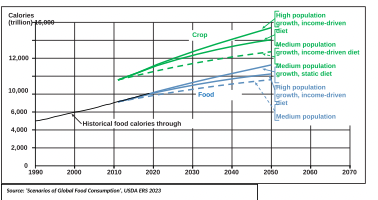The Changing Face of Commodity Trading in the Recent Decade
- Laura Stoskute

- Oct 26, 2020
- 3 min read
Sustainable commodity trading gains momentum

Photo by Elias Shariff Falla Mardini/Pixabay.com
Commodities as we know them have been around forever. They can be in their raw form or processed further to produce other goods, such as sugar, cocoa, oil palm, cotton etc. Essentially, commodities are the driving force stimulating consumption and manufacturing around the world. And with an increasing number of sustainability-linked initiatives, the commodity market is changing and adopting new standards, too.
The driving force for sustainable commodities
International environmental, social and governance (ESG) policies that are outlined in the United Nations 2030 Agenda are having an impact on many industries and are undertaken by a wide range of stakeholders, including those in the commodities sector. According to “The State of Sustainable Markets 2018” the influence of these initiatives are most likely to be seen in a couple of ways. First, there will be an increase in demand from investors and businesses for supply chain transparency, and secondly, the rise in the development of sustainable commodity products will be more common as well.
Fundamentally, it means to provide more sustainable and ethical commodities: conflict-free metals in our mobile phones; fair-trade coffee (that is not destroying our ecosystem) and adequate wages; education for cocoa growers and so on. It is important to ensure that companies and industries shift their mindsets and become more aware of the sustainability importance to the overall well-being. And even though the early sustainability movement focused on consumer-facing brands, the pressure to change is now shifting to all the players in the supply chain.
Sourcing products from sustainable locations
Since the demand for sustainable raw materials has increased, so has the awareness of manufacturers, producers, and even commodity traders. More and more of the aforementioned market participants are demanding to certify that commodities are grown or extracted according to certain worldwide standards.
For instance, this year Chinese cobalt producer, Huayou Cobalt announced that it will no longer purchase artisanal cobalt sourced in the Democratic Republic of Congo until relevant standards are recognised and supported by the industry. Another historical event was when Singapore’s biggest liquefied natural gas (LNG) buyer Pavilion Energy required bidders to quantify greenhouse gas emissions associated with each LNG cargo produced, transported and imported into Singapore.
Similar to above cases, agricultural products like coffee and cocoa, are obvious examples of commodities about which not only end users, but also large corporate purchasers have supply chain concerns. Even though cocoa is grown in tropical countries around the world, 70% of global production comes from West Africa, led by Ghana and Ivory Coast. Unlike coffee, cocoa has not been a source of wealth creation for farmers. Many organisations and big corporates, including Olam[1] and Lidl[2] have committed to have all its chocolate supply sold according to the sustainable standards. In addition to this, Belgian chocolate manufacturers aim to achieve 100% sustainably-produced chocolate by 2025 committing to tackle child labour, deforestation and ensure adequate wages for local cocoa producers.
Is it really possible?
The “greenness” of commodities labelled in certain ways will raise many questions sooner or later. The potential issue, however, that is related to sustainable commodities is that there may not be enough resources to support the whole demand. Yet the world may find ways to adapt to new trends as one very famous person once said, ‘there are only two kinds of car companies: those that sell hybrid cars and those that will sell hybrid cars in the near future’. Same rule applies to commodity trading - you are either on the pathway to sustainable development or you are out of business.
This is the first in a series of articles that explores the relation between commodity trading and sustainability, and takes a deeper look into environmentally efficient supply chains.
- - - - - - - - - - - - - - - -
[1] http://www.bibalex.org/Search4Dev/files/431935/460335.pdf
[2] https://www.rikolto.org/en/project/way-towards-living-income-ghanaian-cocoa-farmers















Comments